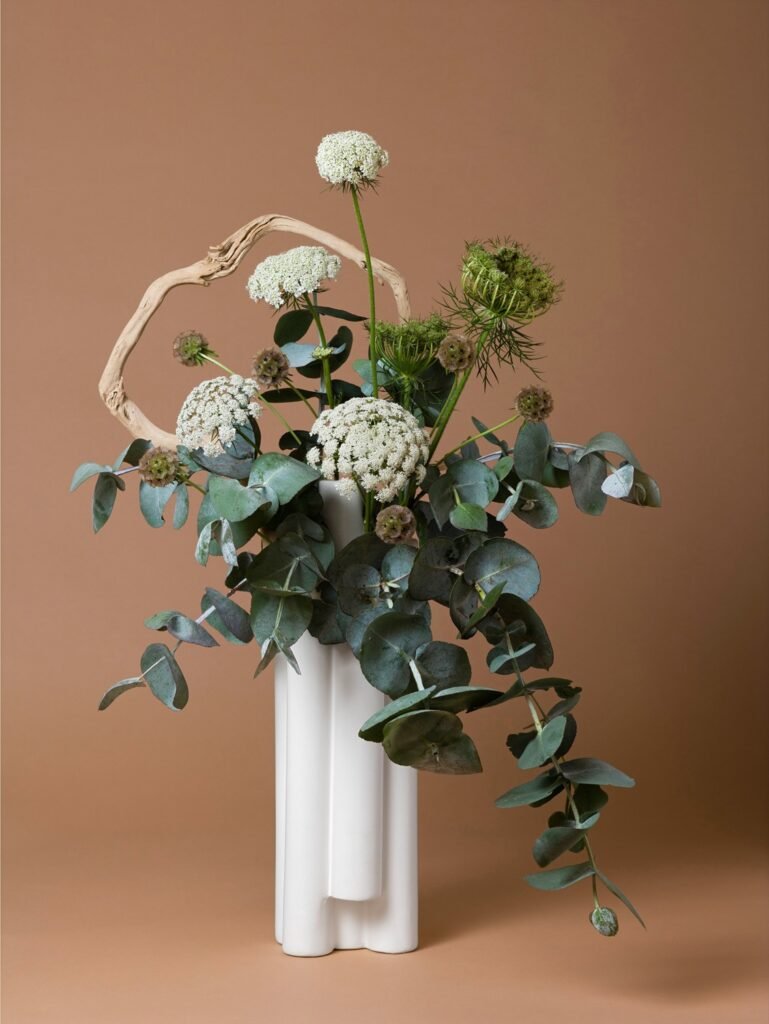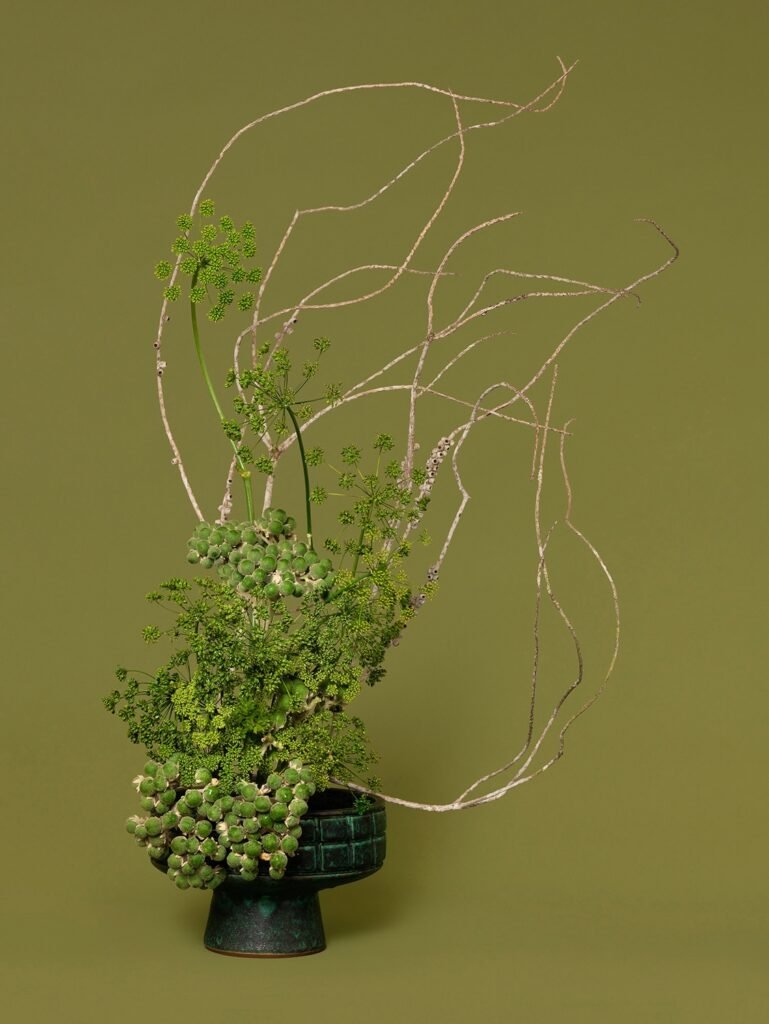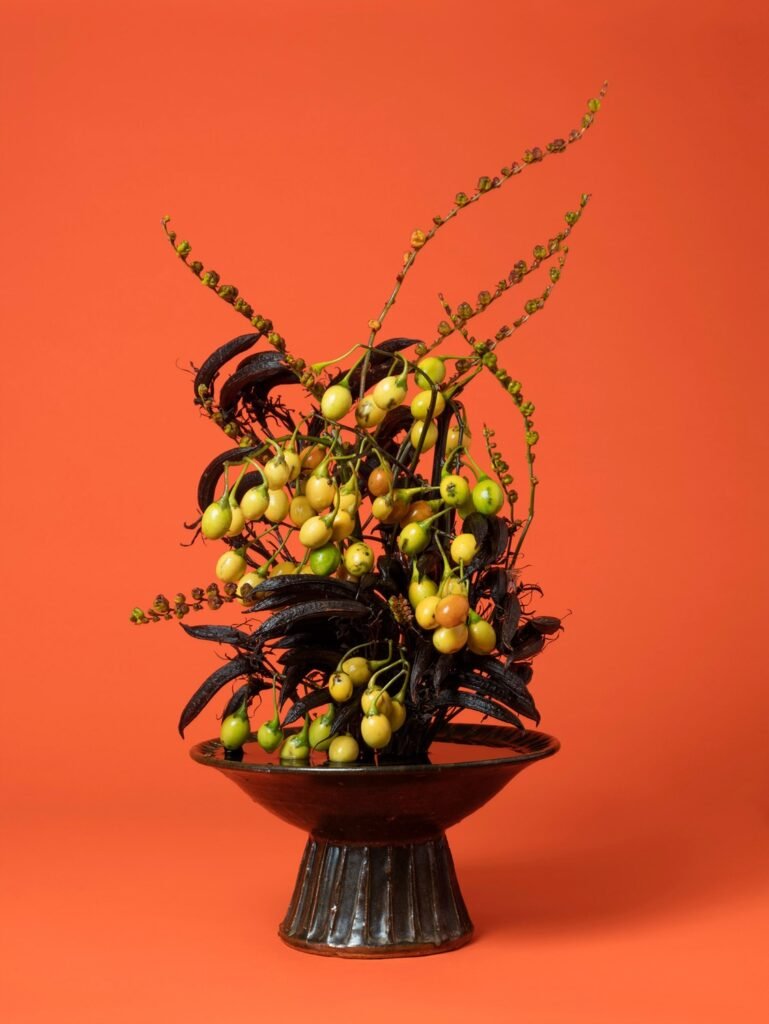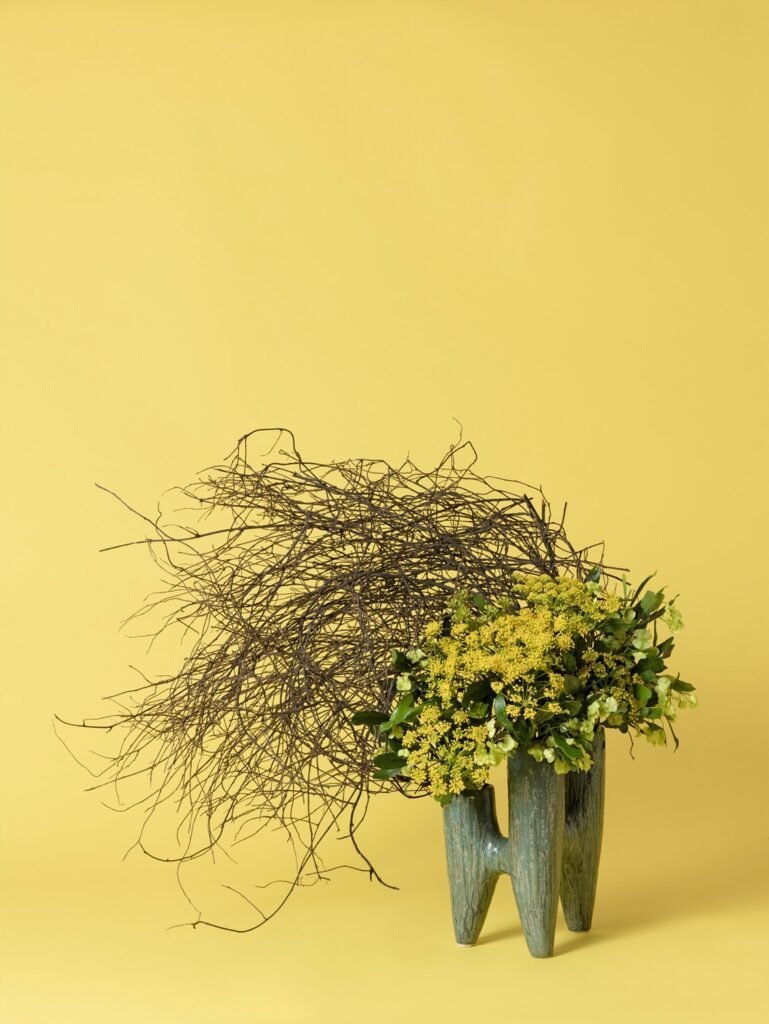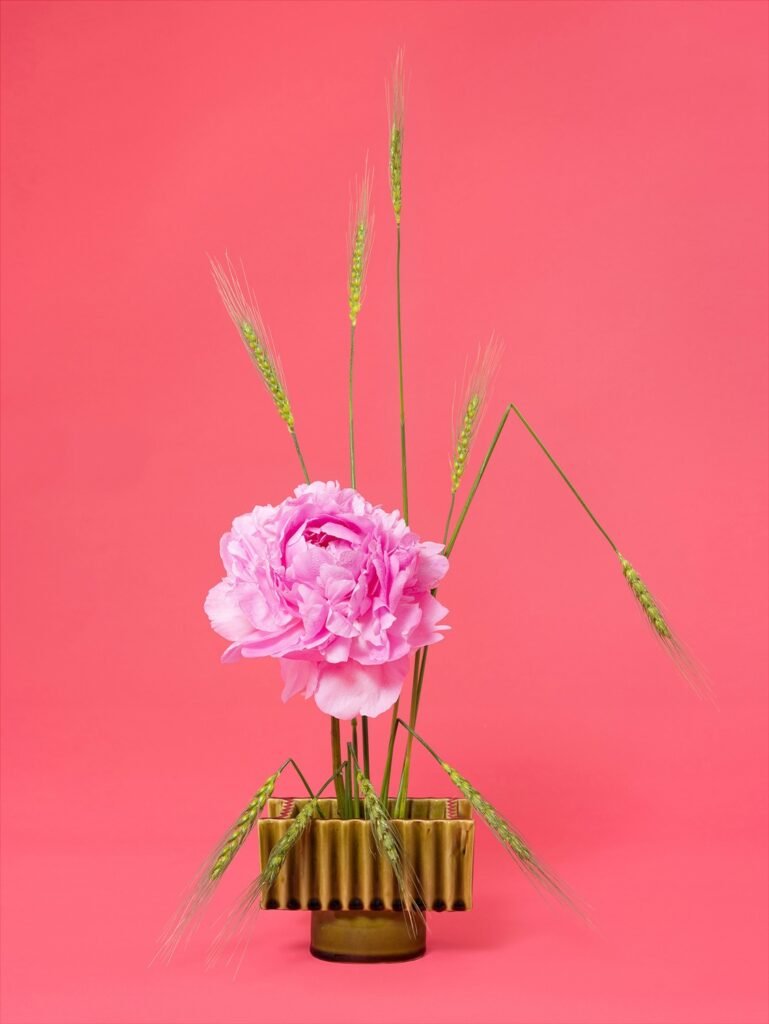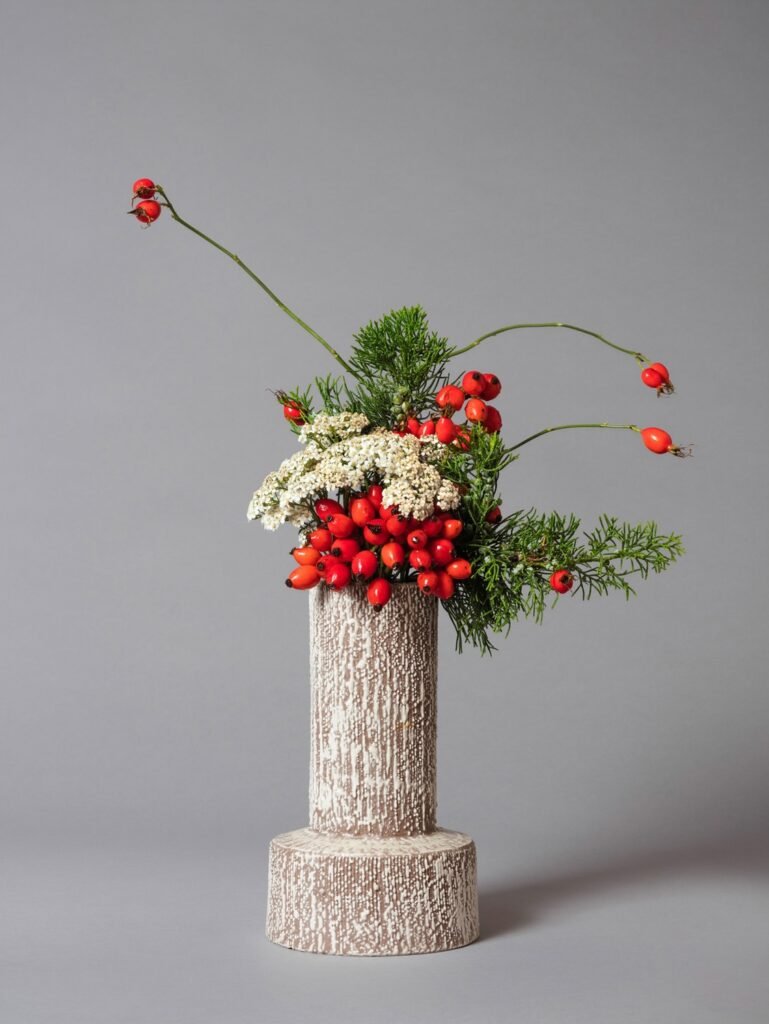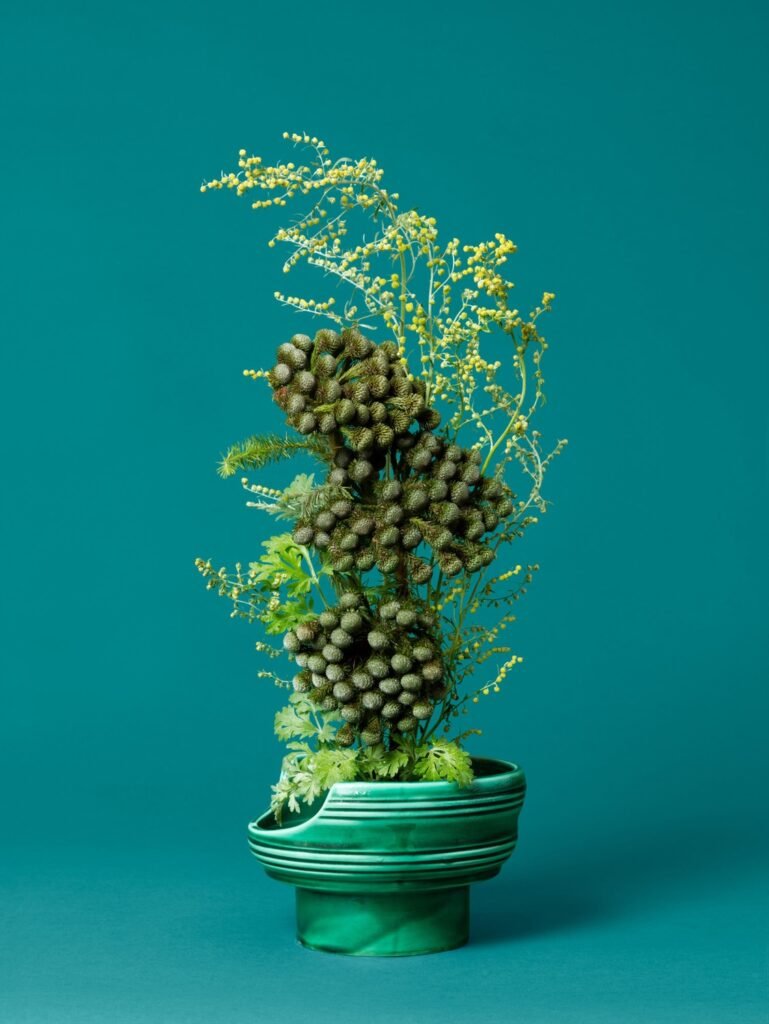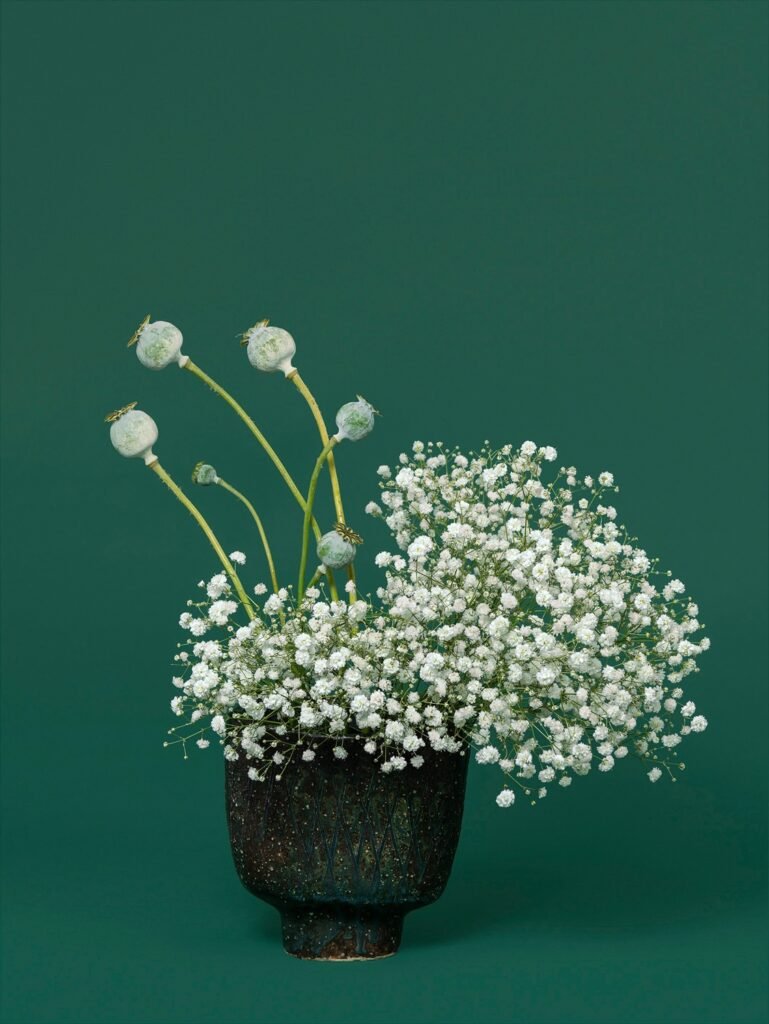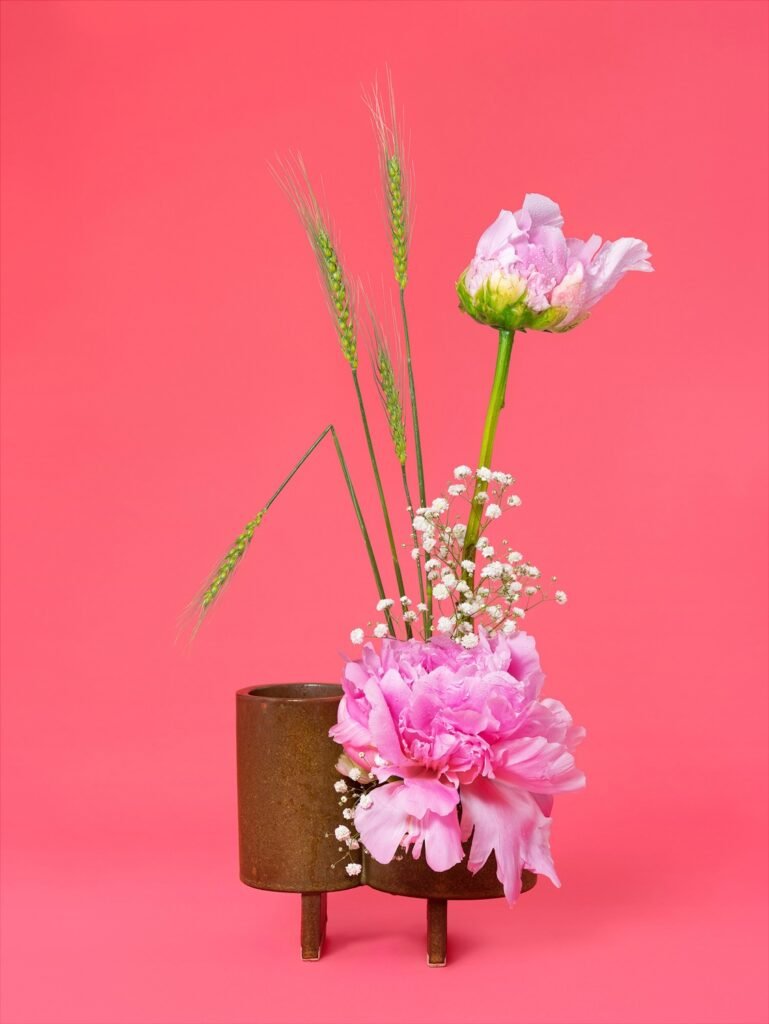Ann Shelton’s jane says is a photographic garden of flowers and herbs exquisitely arranged by the artist and offset against a brightly coloured background. The plants selected—rue, peony, pennyroyal, poroporo among them—are drawn from millennia of human history in which they have been used medicinally (as part of tonics and tinctures) which contain emmenagogues (substances which bring on menstruation), abortifacients (substances which induce abortion), or contraceptives, all of varying strengths. Along with her research into the histories of botanical medicine, colonial practices of abortion and human relationships with these plants, this series of large-scale hyper-detailed images reference the Japanese tradition of Ikebana, which the artist learned, and its visual and conceptual qualities of structure and regulation. The series is accompanied by printed matter and performance-based components.
Shelton, who grows some of the more difficult to source plants herself and who constructs these arrangements, reminds us of the knowledge nature holds. Her work is significant in this moment not only of the politicization of women’s health and the #metoo movement, but also in the time of climate change and the coronavirus. Shelton’s images argue that our mismanagement of nature engendered incremental loss of knowledge and understanding that we cannot easily build back, and that continues to pose a danger to human existence.
Ann Shelton (b. 1967, Pākehā/Italian) identifies as queer and lives in Aotearoa New Zealand and exhibits internationally. Shelton’s exhibition worm, root, wort… & bane at Alice Austen House, NY, in March 2024 was her first institutional solo exhibition in the United States. Her museum survey, Dark Matter, curated by Zara Stanhope (Director, Govett-Brewster Art Gallery) was hosted by Auckland Art Gallery Toi o Tāmaki in 2016 and toured to Christchurch Art Gallery Te Puna o Waiwhetū in 2017. Shelton’s work engages with questions around the disciplined body, and how that discipline is organised around gender, sexuality, misogyny, medicine, food, or crime.
Her most recent research engages with plant knowledge and the impacts of plants on the body, particularly their history relating to the re-construction of the role of women in Western Society since the witch hunts in early modern Europe, the role of plants historically in reproductive contexts, in relation to contemporary feminisms and the current climate emergency.
Shelton’s work has been extensively reviewed in publications including Artforum, Hyperallergic, artnet news, and Evergreen Review. Shelton is represented in Aotearoa New Zealand by Two Rooms. Her work is collected in public and private contexts throughout Aotearoa, Australia, and North America.
She is an Honorary Research Fellow in Photography at Whiti o Rehua School of Art, Massey University, Aotearoa and holds an MFA from the University of British Columbia, Canada.
Getxophoto is an image festival created and managed by Begihandi, that has been taking place in Getxo—Basque Country, Euskadi—since 2007. This festival is part of a cultural ecosystem with the aim of being more participatory, hybrid, committed and sustainable. This thematic Festival is conceived as a platform that addresses contemporary challenges through different proposals, from visual storytellers around the world, in an attempt to create spaces for reflection and establish a collective conversation. Getxophoto is characterized by the radical defense of public space (both physical and online). For this reason, most of its programme is composed of outdoor installations, highlighting, on the one hand, the link between the image and the environment and, on the other, generating a more horizontal and participatory relationship with the public.
This year, after PAUSE and PLAY, the festival will take the theme: REC. The abbreviation for Record, which usually appears as a red circle on our screens, refers to a register, to memory, to the story of the past, and to images as a witness to reality. The relationship between image and record is a central debate in visual studies, one that has been addressed by the great names of the theory of photography such as Walter Benjamin, Susan Sontag and Georges Didi-Huberman. But what is left of this debate today in relation to contemporary technologies? What is the difference between accumulating archives and telling a story? What is the future of the image—and of memory constructed through visual recording—in a world of extreme, immaterial, manipulable and seemingly infinite REC?
María Ptqk is the curator of GETXOPHOTO 2025.



